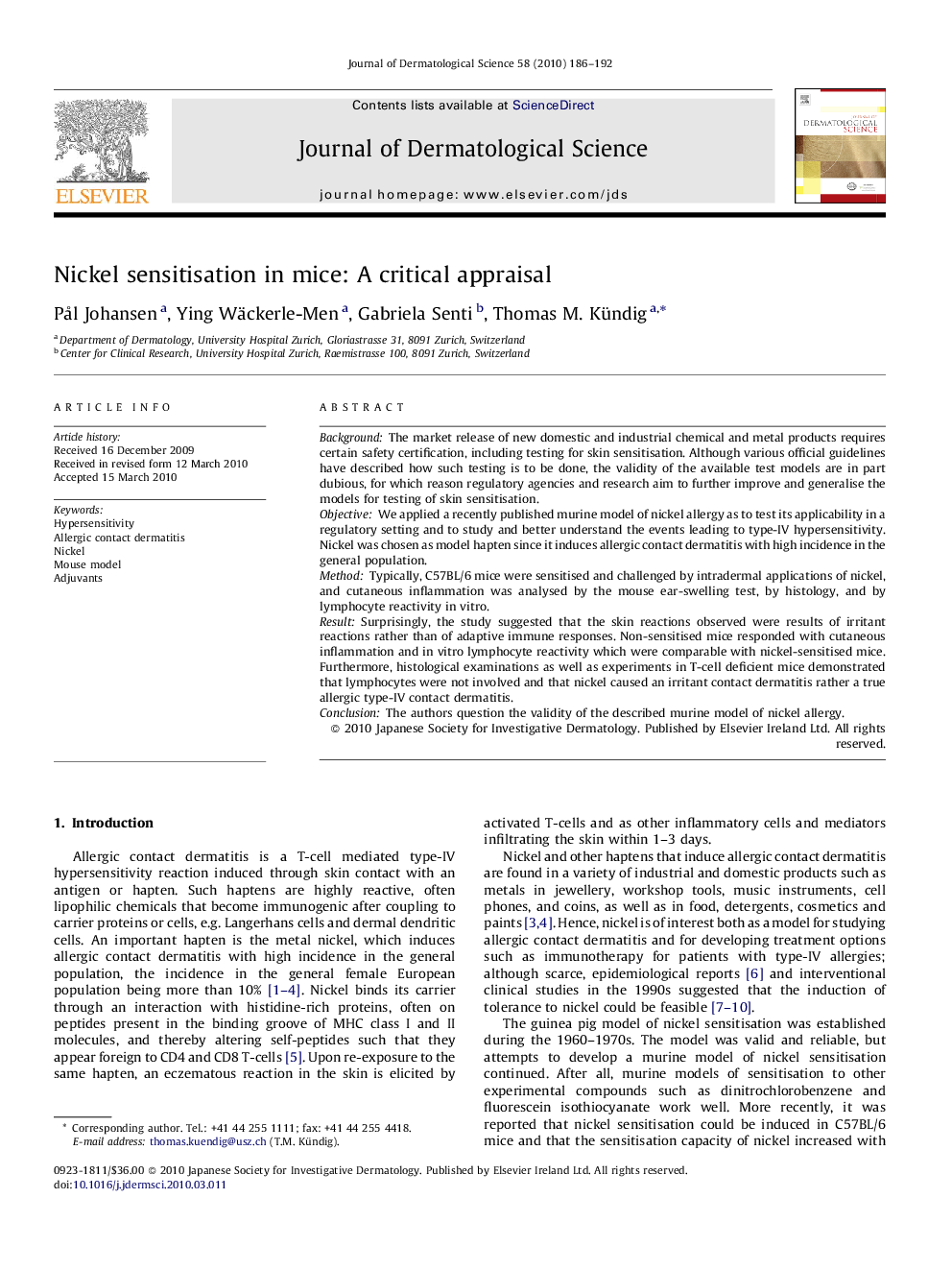| Article ID | Journal | Published Year | Pages | File Type |
|---|---|---|---|---|
| 3213862 | Journal of Dermatological Science | 2010 | 7 Pages |
BackgroundThe market release of new domestic and industrial chemical and metal products requires certain safety certification, including testing for skin sensitisation. Although various official guidelines have described how such testing is to be done, the validity of the available test models are in part dubious, for which reason regulatory agencies and research aim to further improve and generalise the models for testing of skin sensitisation.ObjectiveWe applied a recently published murine model of nickel allergy as to test its applicability in a regulatory setting and to study and better understand the events leading to type-IV hypersensitivity. Nickel was chosen as model hapten since it induces allergic contact dermatitis with high incidence in the general population.MethodTypically, C57BL/6 mice were sensitised and challenged by intradermal applications of nickel, and cutaneous inflammation was analysed by the mouse ear-swelling test, by histology, and by lymphocyte reactivity in vitro.ResultSurprisingly, the study suggested that the skin reactions observed were results of irritant reactions rather than of adaptive immune responses. Non-sensitised mice responded with cutaneous inflammation and in vitro lymphocyte reactivity which were comparable with nickel-sensitised mice. Furthermore, histological examinations as well as experiments in T-cell deficient mice demonstrated that lymphocytes were not involved and that nickel caused an irritant contact dermatitis rather a true allergic type-IV contact dermatitis.ConclusionThe authors question the validity of the described murine model of nickel allergy.
